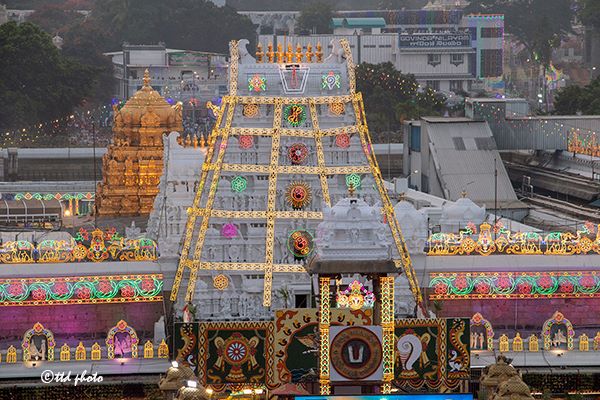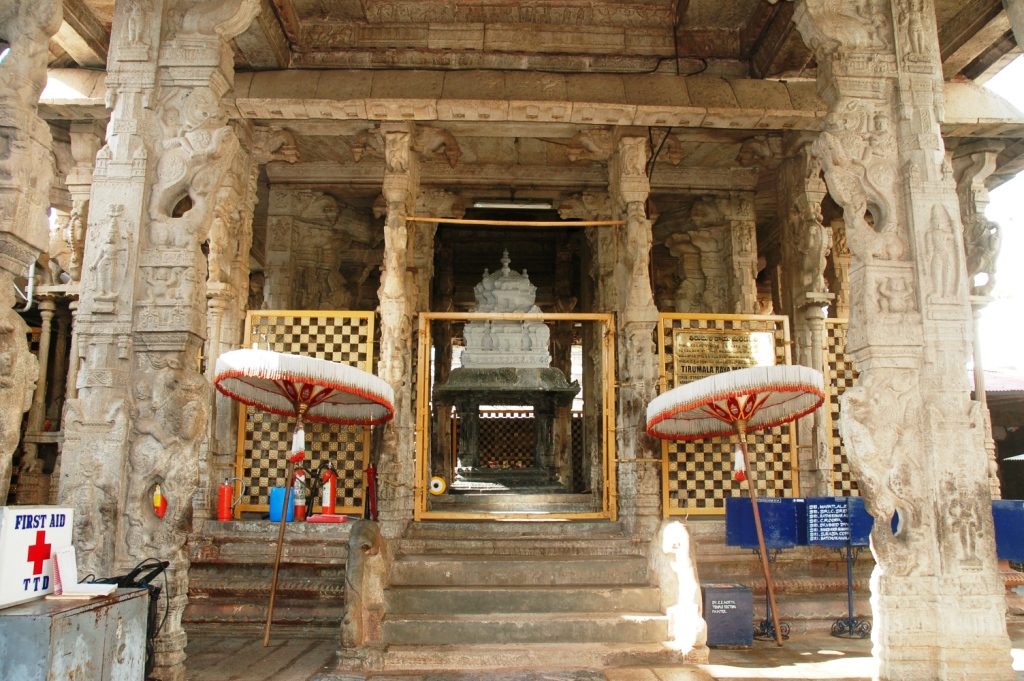Kalyanotsava Mandapam or Kalyana Mandapam The lush green forests of Seshachala house, Sri Venkateswara Swamy, who is also revered as Perumal, Venkatachalapati, Tirumalesa, Govinda, Balaji, Srinivasa and many more names. Mandapams – Tirumala Temple The ancient temple of Lord Venkateswara in the hill shrine of Tirumala is an amazing complex of history, culture, and traditions. Almost Read More
Tag: addala mandapam
The Aina Mahal or the Mirror hall (Addala Mandapam) is on the northern side of the Tirumala Raya Mandapam spread over 42 square feet each of two chambers
Anna Unjal Mandapam
Mandapams of Tirumala The lush green forests of Seshachala house, Sri Venkateswara Swamy, who is also revered as Perumal, Venkatachalapati, Tirumalesa, Govinda, Balaji, Srinivasa and many more names. The ancient temple of Lord Venkateswara in the hill shrine of Tirumala is an amazing complex of history, culture, and traditions. Almost every brick speaks volumes about Read More
Tirumala Raya Mandapam
Mandapams of Tirumala The lush green forests of Seshachala house, Sri Venkateswara Swamy, who is also revered as Perumal, Venkatachalapati, Tirumalesa, Govinda, Balaji, Srinivasa and many more names. The ancient temple of Lord Venkateswara in the hill shrine of Tirumala is an amazing complex of history, culture, and traditions. Almost every brick speaks volumes about Read More
Kalyana Mandapam – Inside Tirumala Temple
Kalyana Mandapam or Kalyanotsava Mandapam The lush green forests of Seshachala house, Sri Venkateswara Swamy, who is also revered as Perumal, Venkatachalapati, Tirumalesa, Govinda, Balaji, Srinivasa and many more names. Mandapams – Tirumala Temple The ancient temple of Lord Venkateswara in the hill shrine of Tirumala is an amazing complex of history, culture, and traditions. Read More


